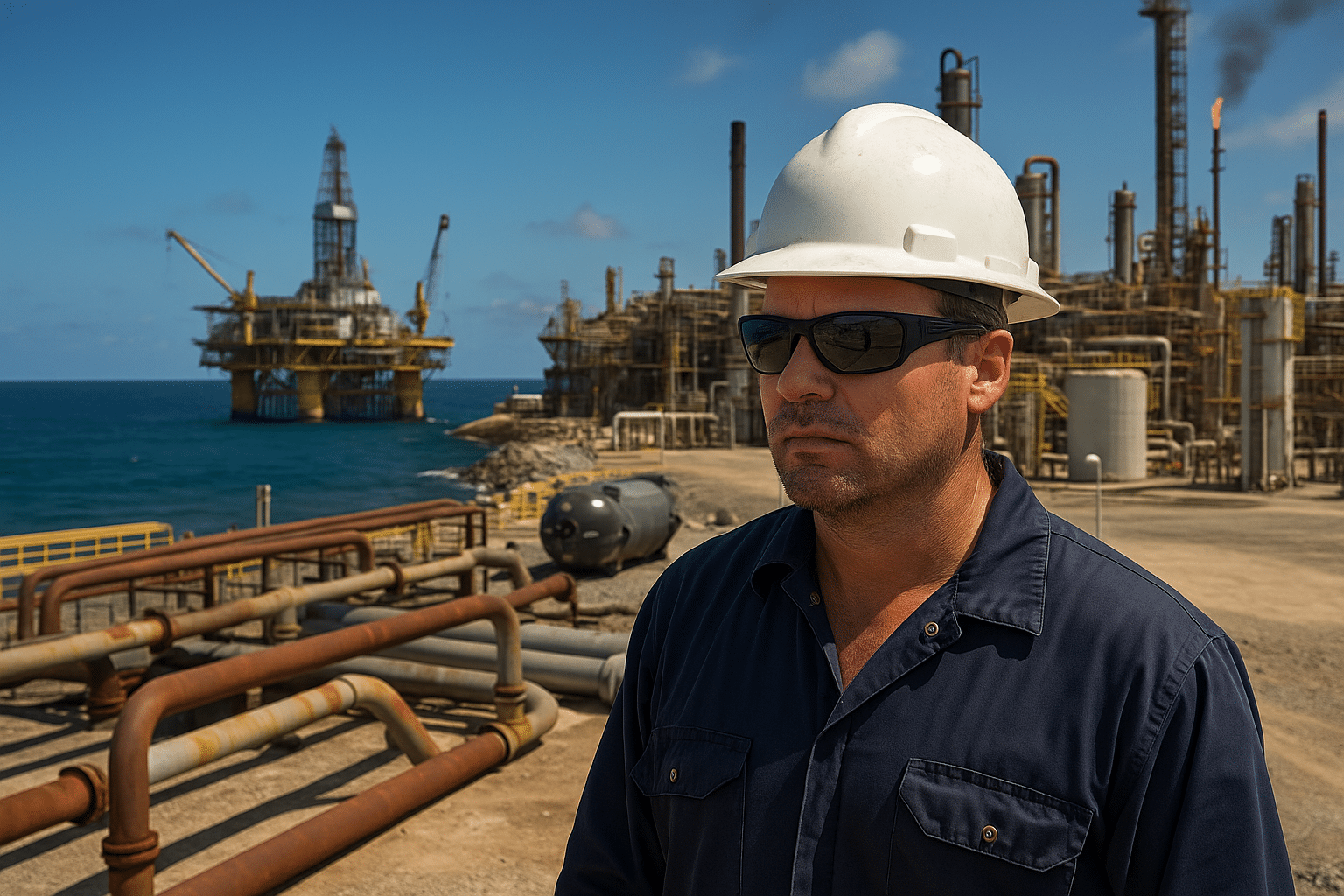The Gulf Coast is one of the most active oil and gas regions in the world, with offshore rigs, onshore processing facilities, and vast pipeline networks. While the opportunities are enormous, so are the risks. Workers in this sector regularly face high-pressure environments, extreme weather, mechanical failures, and other critical hazards that can affect their safety and operational performance.

At Ship-Around, we recognize these risks and offer a wide range of specialized maritime and offshore equipment to support safety, reliability, and regulatory compliance. Here’s a breakdown of the top five hazards facing Gulf Coast oil and gas workers—and how you can mitigate them using the right tools and strategies.
1. Hazard: High-Pressure Equipment Failures
The Risk:
Offshore and onshore oil & gas operations often involve working with high-pressure systems—pumps, valves, and hoses. A sudden equipment failure can result in serious injuries, chemical spills, or fire hazards.
Mitigation Strategy:
- Routine pressure checks
- Certified pressure-rated equipment
- Fail-safes and protective gear
We supply DNV-certified high-pressure hoses and connectors, along with hydraulic safety valves, engineered for offshore and corrosive environments. Our hydraulic ROV tools also allow for remote control in high-risk pressure zones—keeping your personnel at a safe distance.
2. Hazard: Fire and Explosion Risks
Flammable gases, hydrocarbons, and electrical equipment make oil rigs and refineries vulnerable to fire and explosions—especially during shutdowns, maintenance, or leaks.
Mitigation Strategy:
- Explosion-proof rated gear
- Thermal insulation and containment systems
- Proper grounding and bonding equipment
ATEX-rated equipment, including fire-resistant hoses, flame-retardant covers, and containment barriers. Our team can also support with design conversion services to upgrade legacy systems for safer operations.
3. Hazard: Slips, Trips, and Falls
With wet decks, oily surfaces, and confined spaces, oil and gas workers face a high likelihood of slipping, tripping, or falling, which accounts for a large portion of non-fatal injuries offshore.
Mitigation Strategy:
- Anti-slip mats and flooring.
- Clear safety pathways.
- Proper lifting and securing gear.
Our supply of deck safety systems, anti-slip mats, and lifting & rigging gear designed for high-moisture, high-wear conditions. Our Tiger Lifting corrosion-resistant chain blocks are perfect for secure and ergonomic lifting in offshore settings.
4. Hazard: Offshore Transfer Accidents
Personnel and cargo transfers between vessels and platforms in open sea conditions can lead to crane accidents, dropped loads, or man-overboard situations, especially during bad weather.
Mitigation Strategy:
- Use of pneumatic fenders
- Safe mooring systems
- Controlled crane operations
Our Yokohama-type pneumatic fenders and custom mooring systems protect your crew and infrastructure during ship-to-platform transfers. Plus, our fender rental program allows for scalable deployments as needed.
5. Hazard: Extreme Weather & Natural Disasters
The Gulf Coast is frequently impacted by hurricanes, lightning storms, and extreme heat—all of which threaten worker safety and equipment integrity.
Mitigation Strategy:
- Emergency response kits.
- Storm-rated shelters and storage.
- Weather-resistant equipment.
We provide weather-hardened storage units, UV-resistant marine ropes, and modular storm protection systems. Additionally, we offer custom procurement planning to ensure you have critical gear available before the next storm season.
Protecting your crew is more than compliance—it’s the foundation of operational excellence. From fenders and lifting gear to high-pressure hoses and weather-rated systems, Ship-Around equips Gulf Coast oil & gas operators with fit-for-purpose, safety-driven solutions.
Every hazard has a solution—let’s help you find it.

